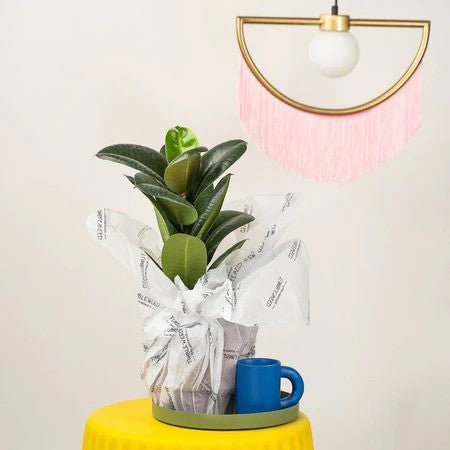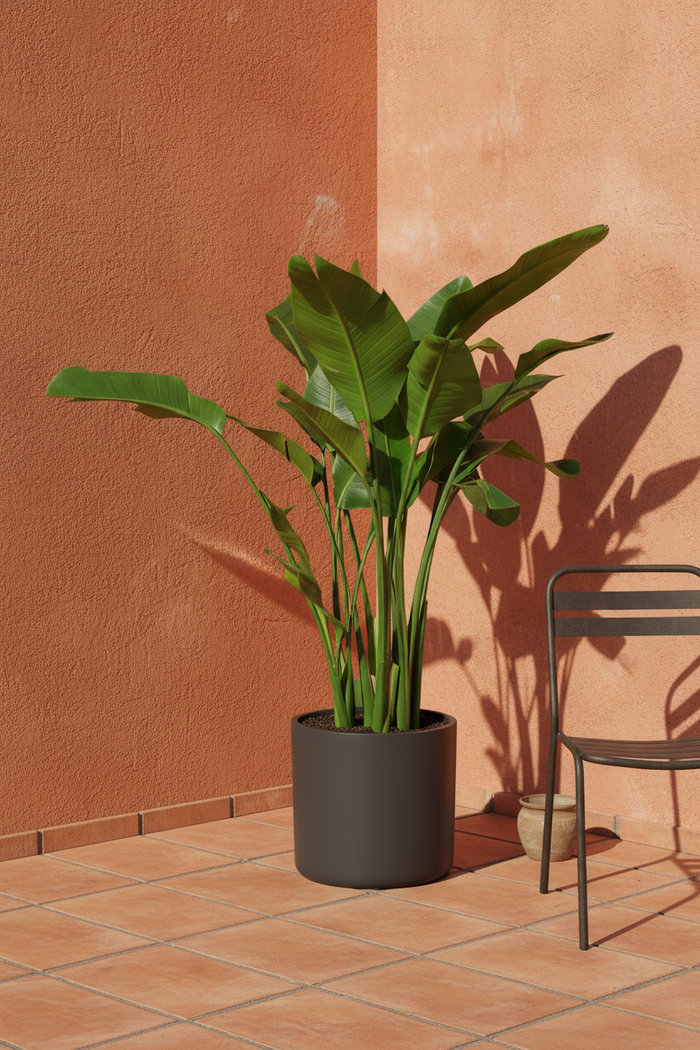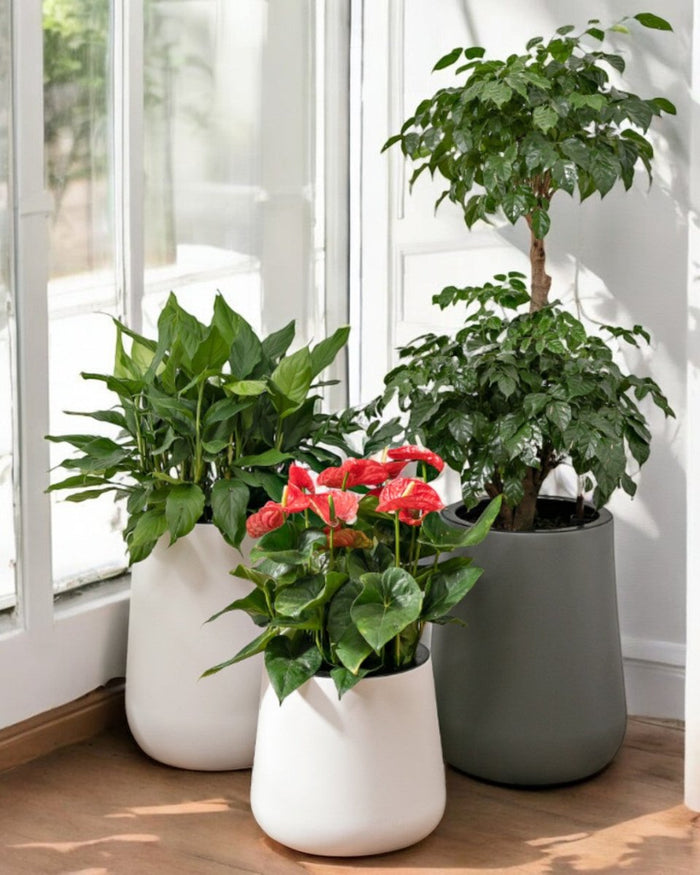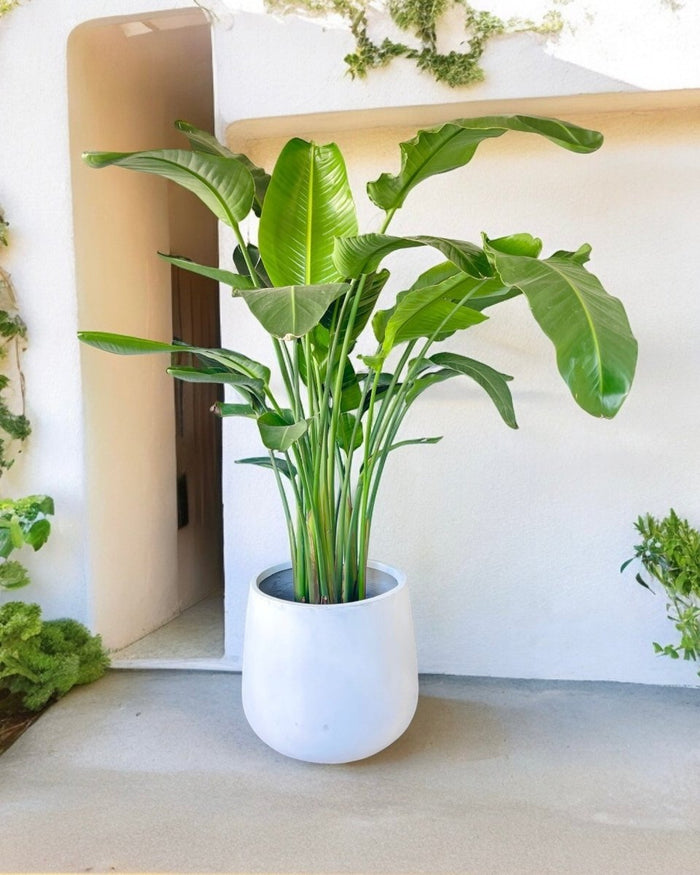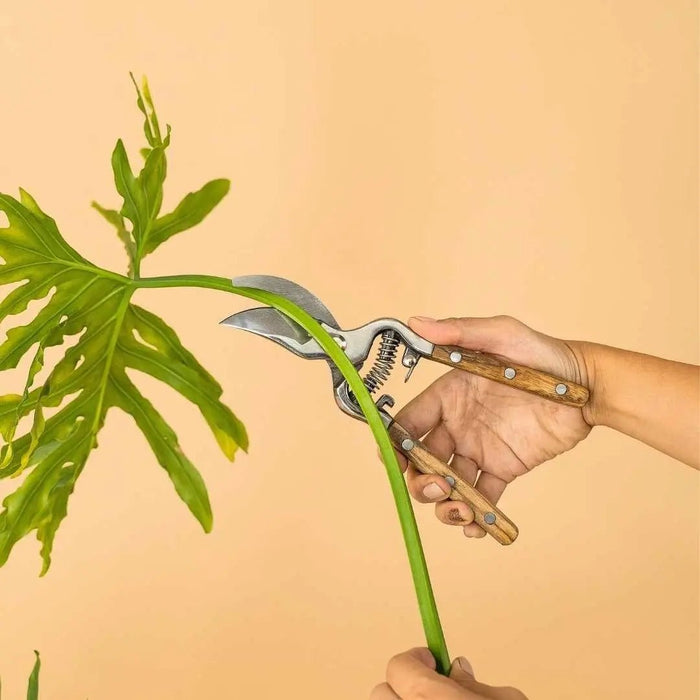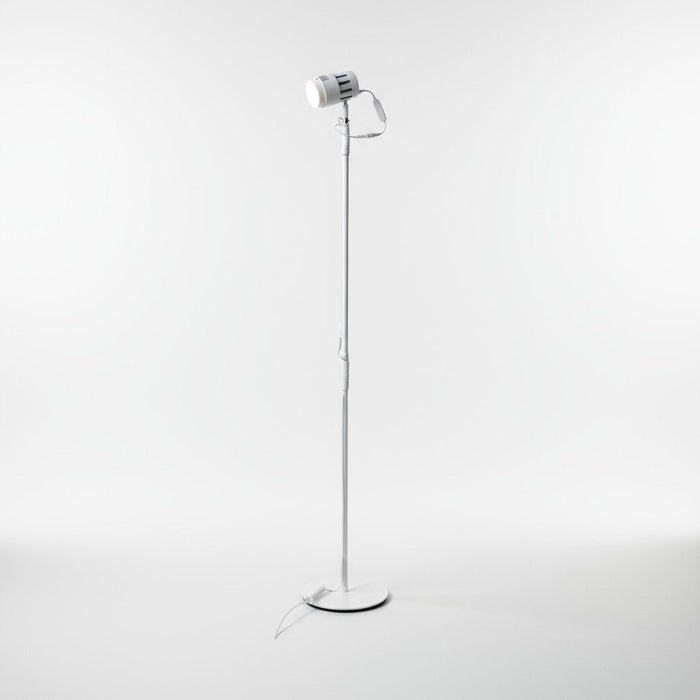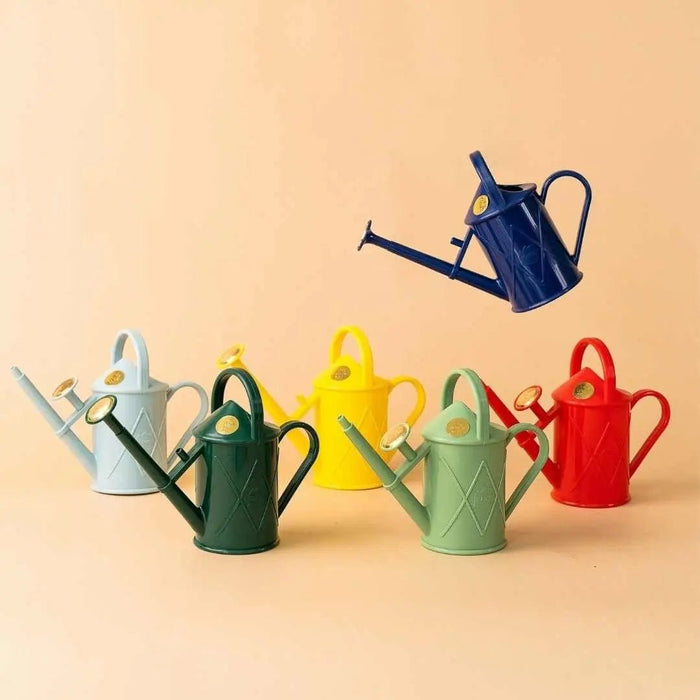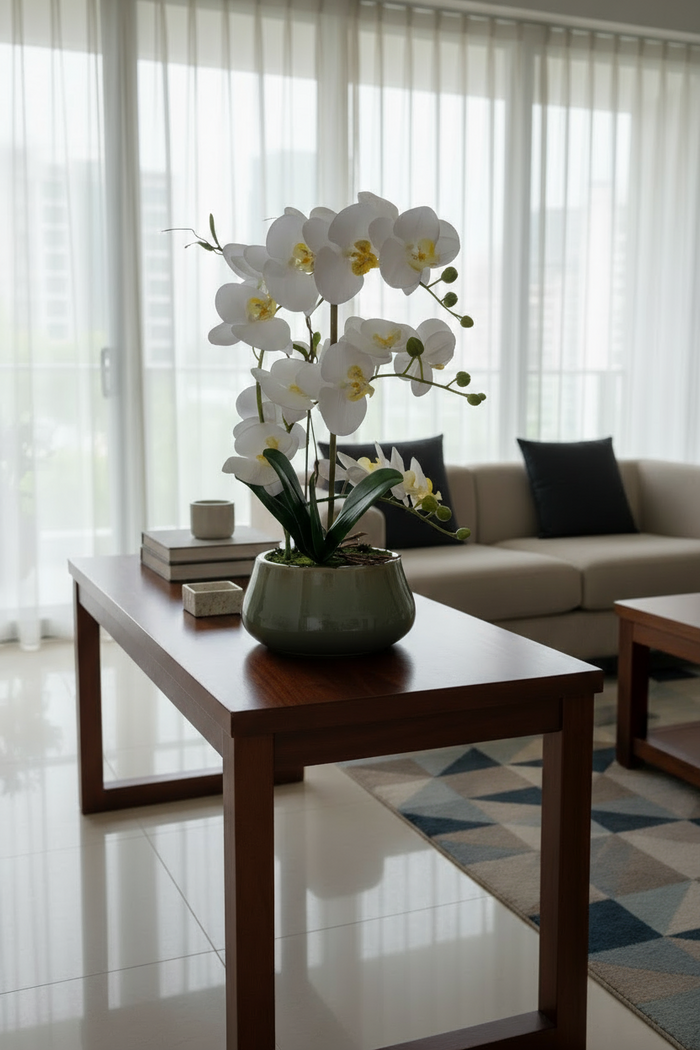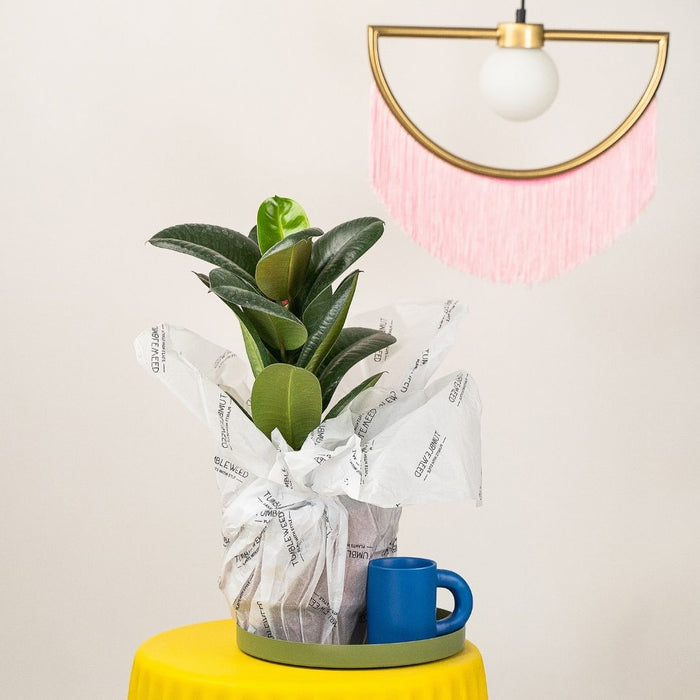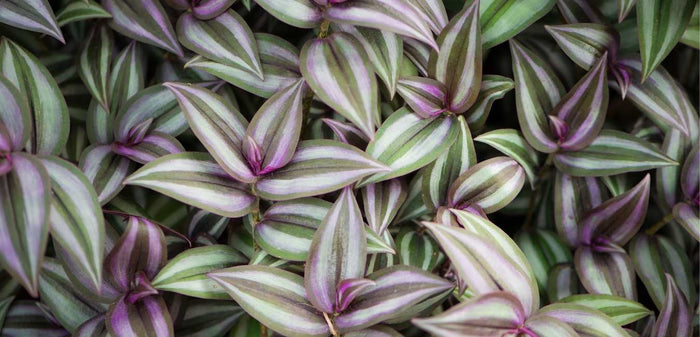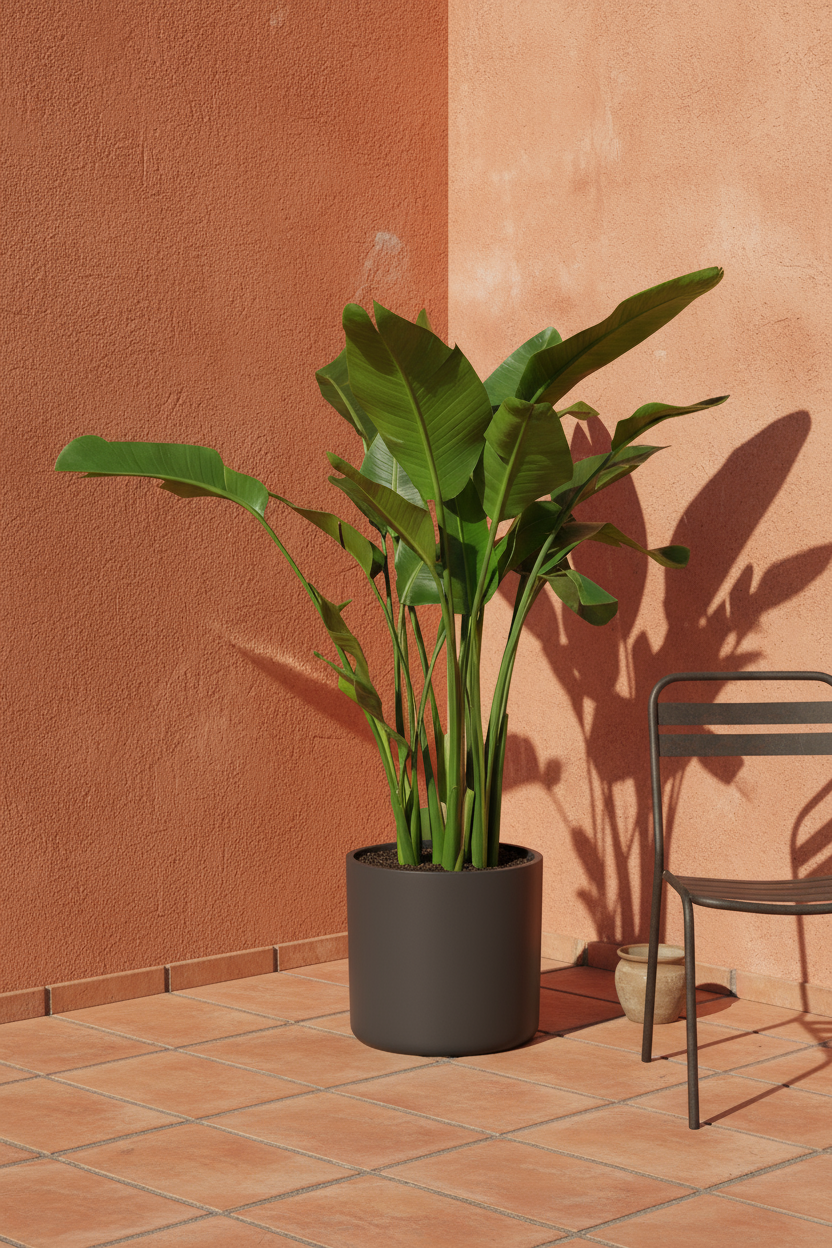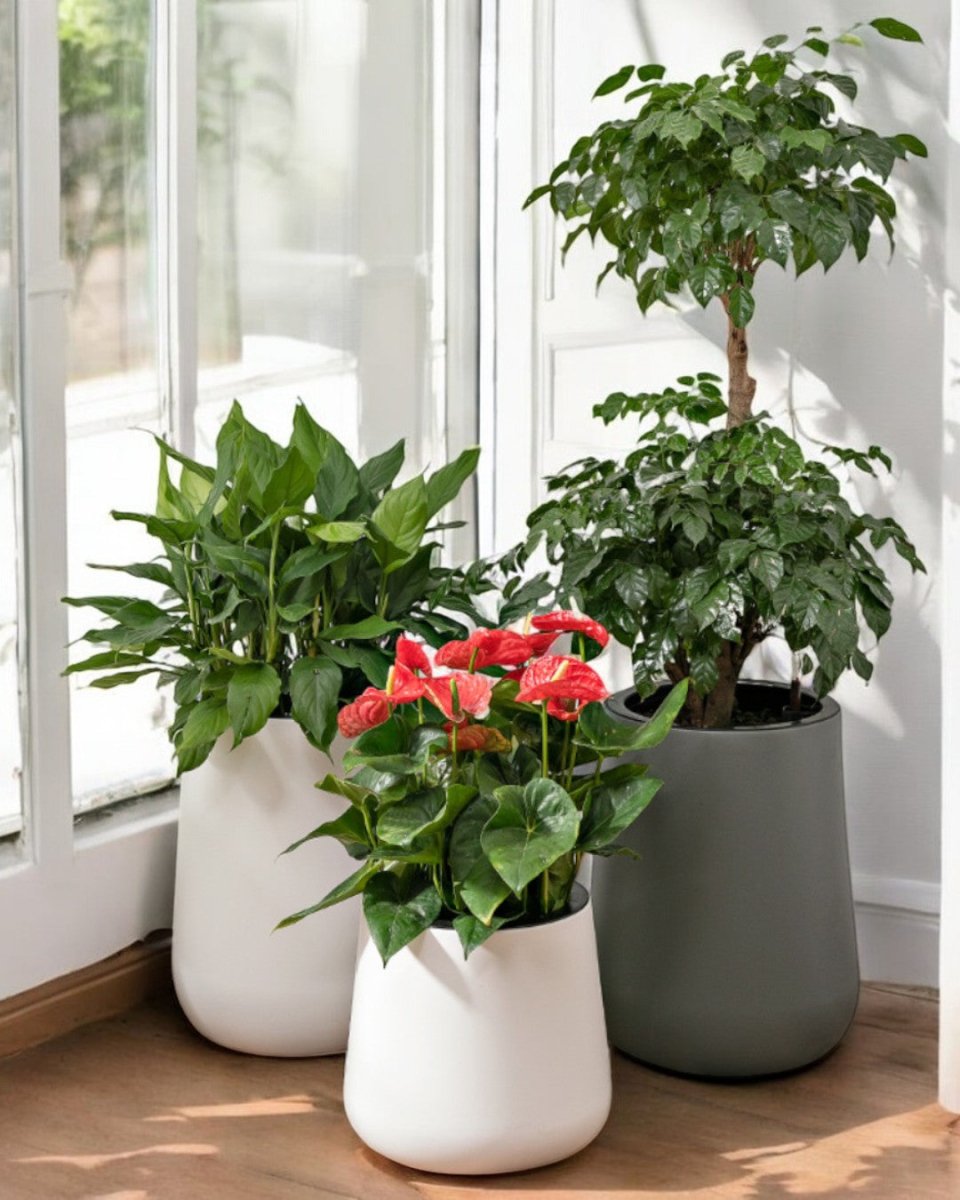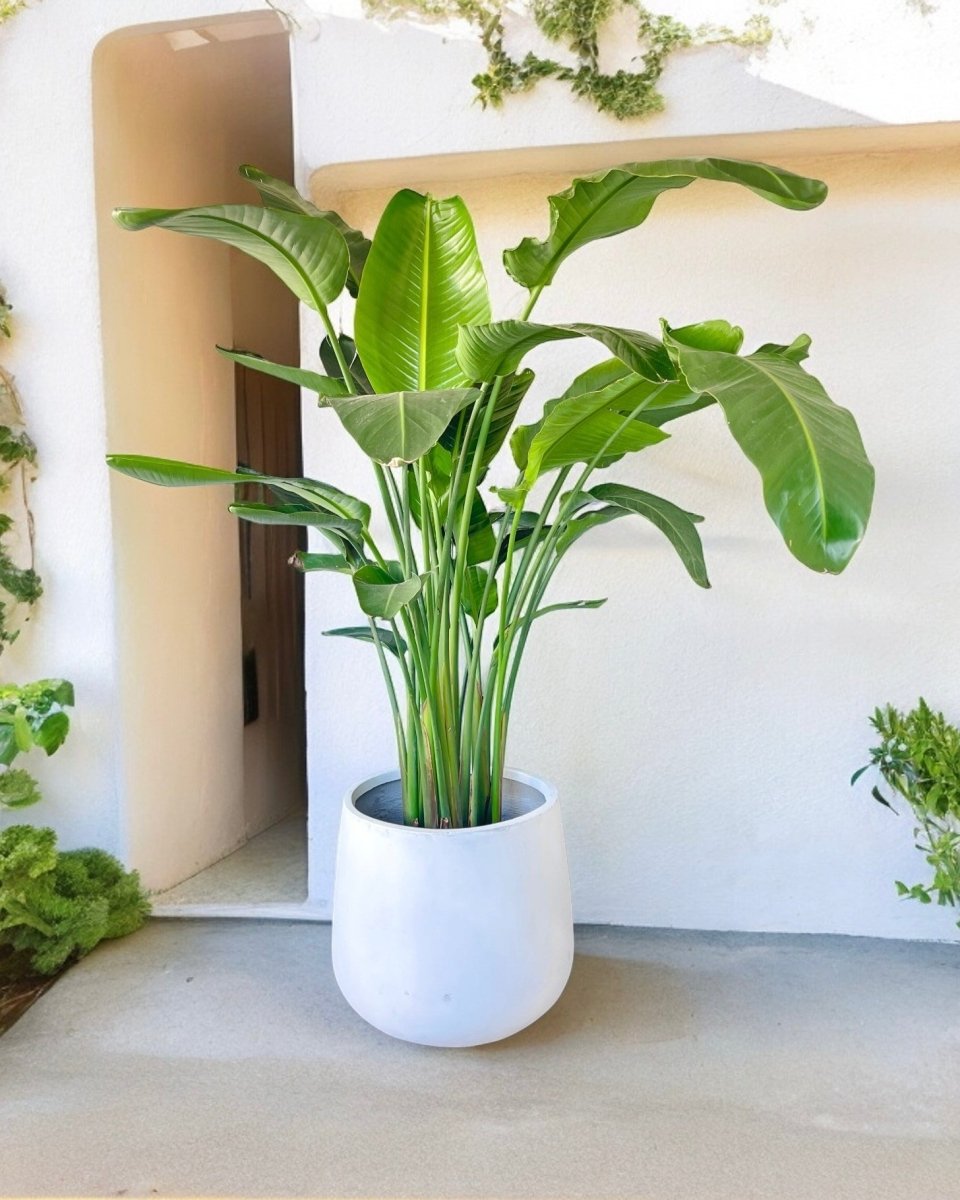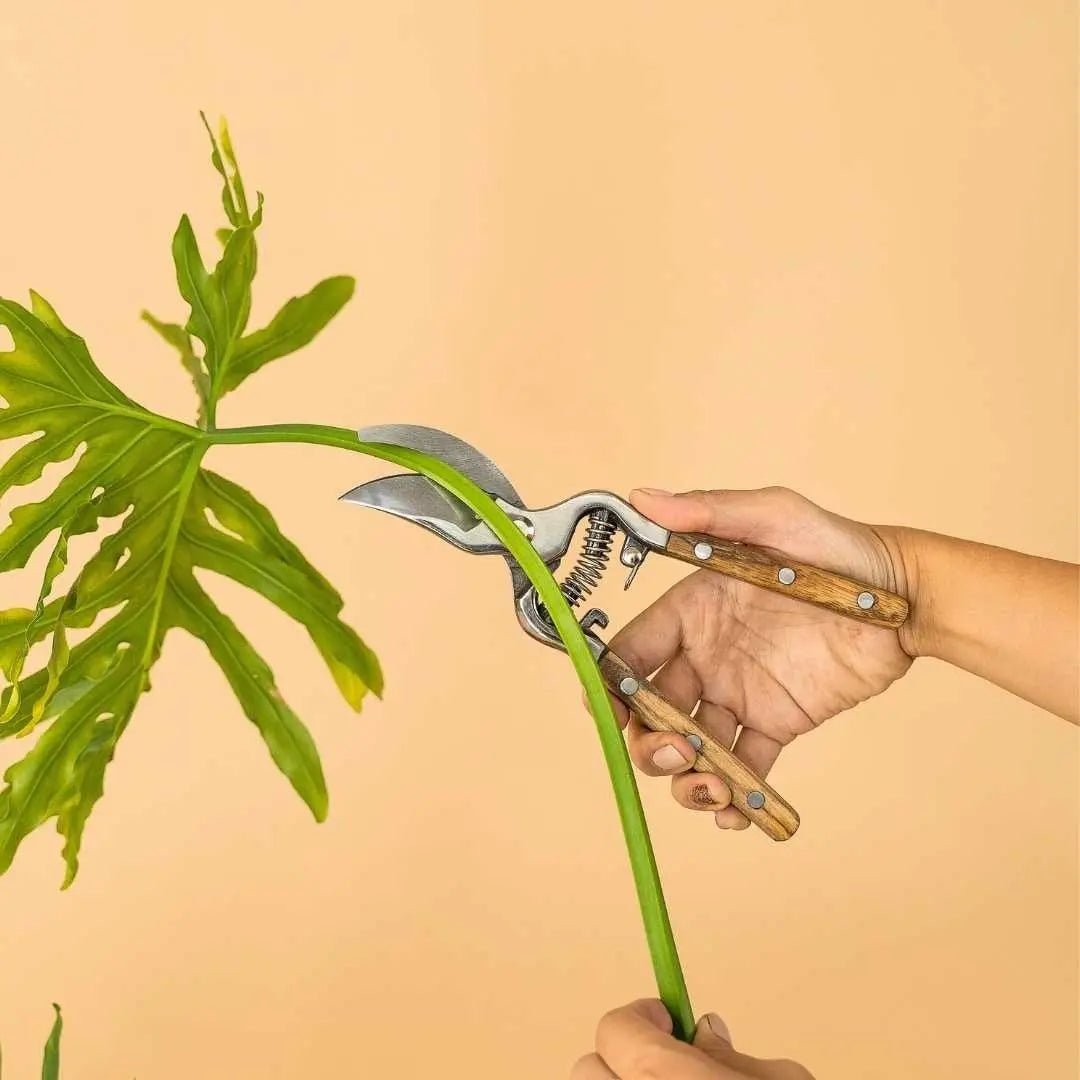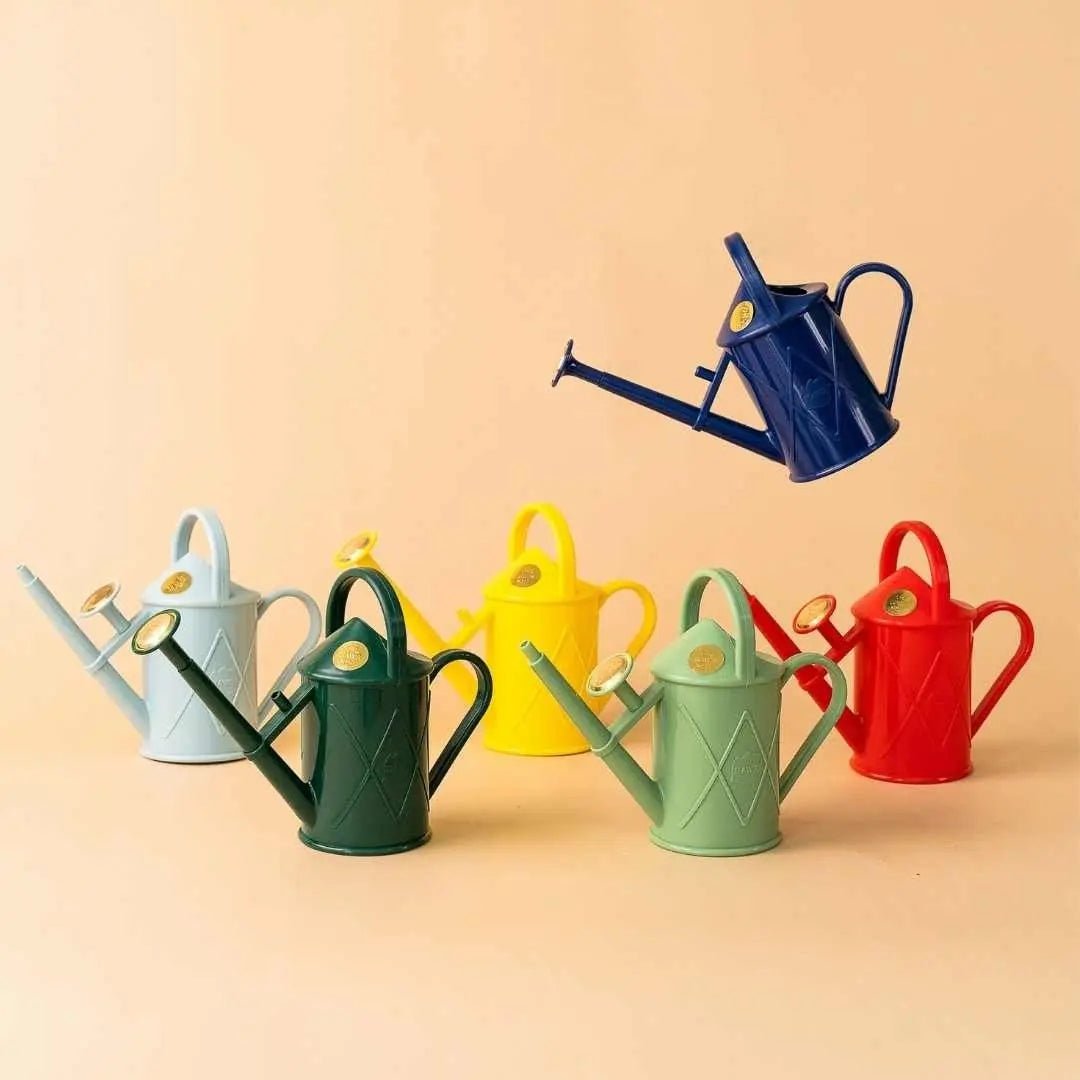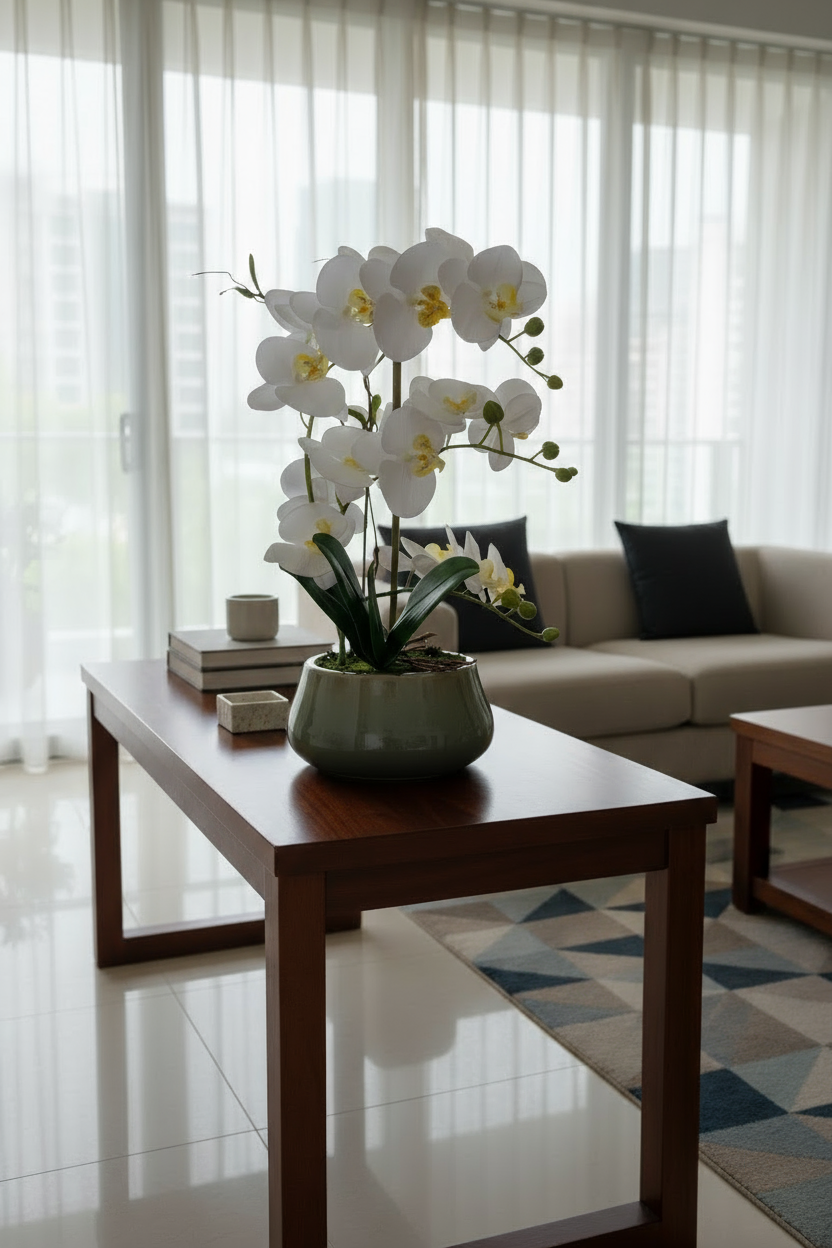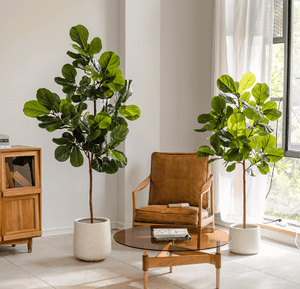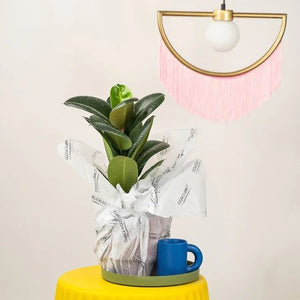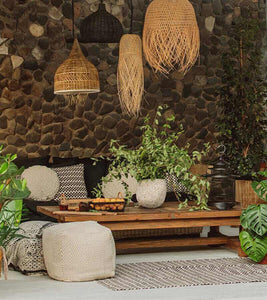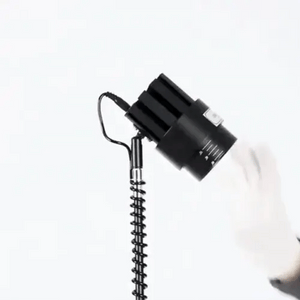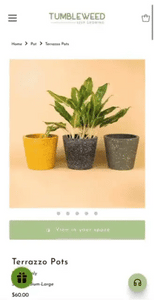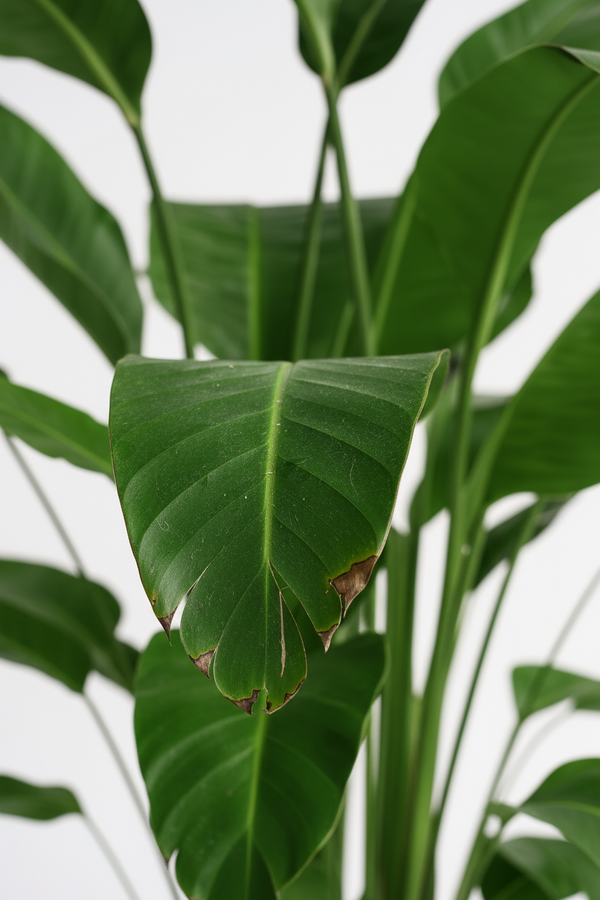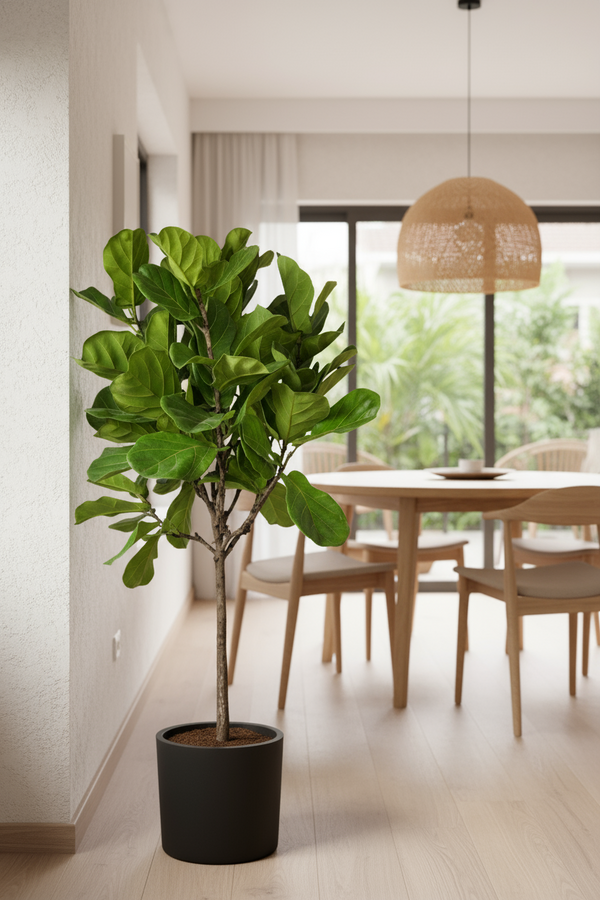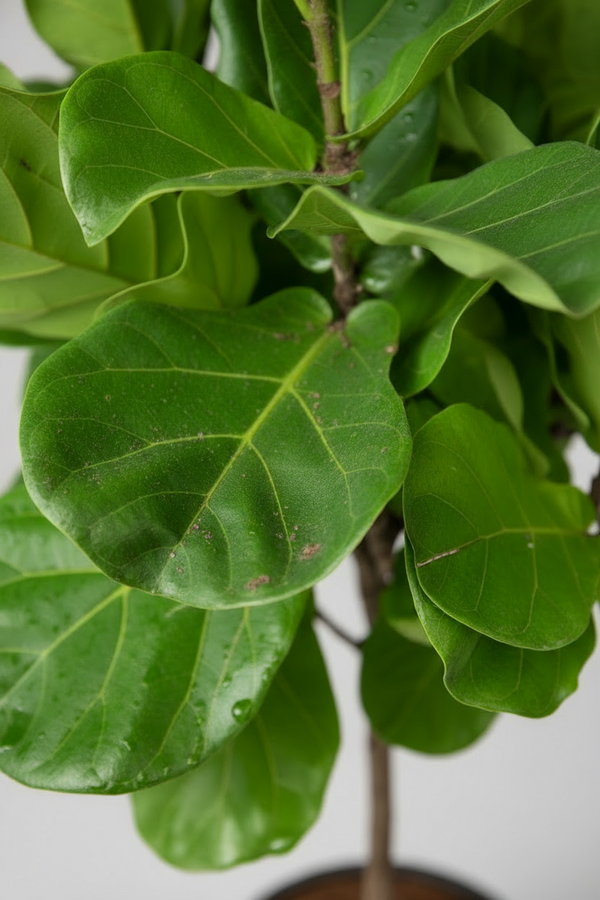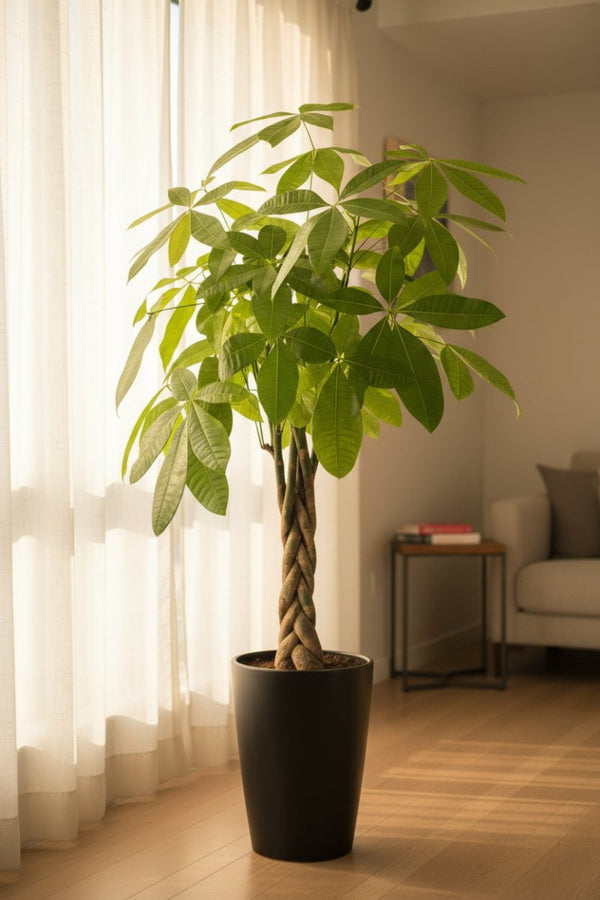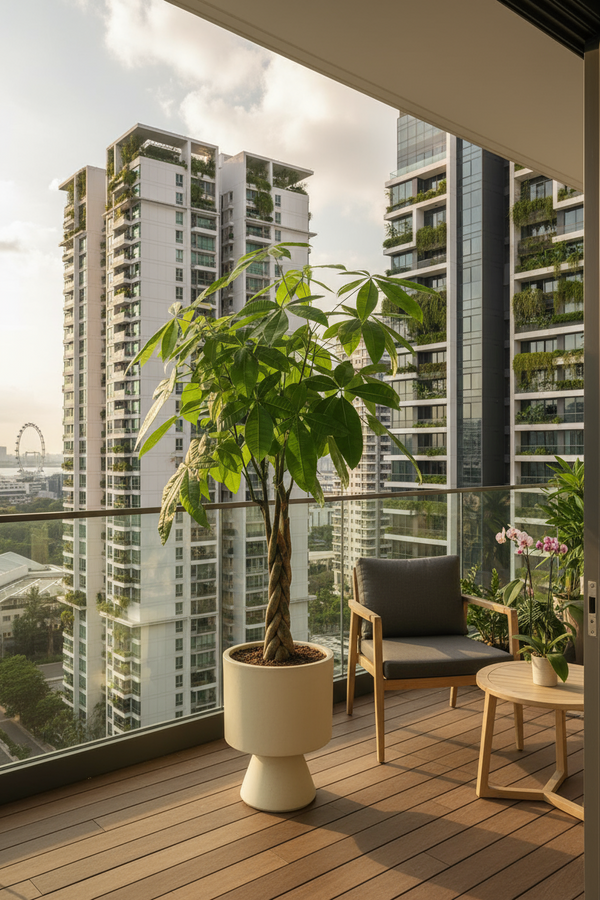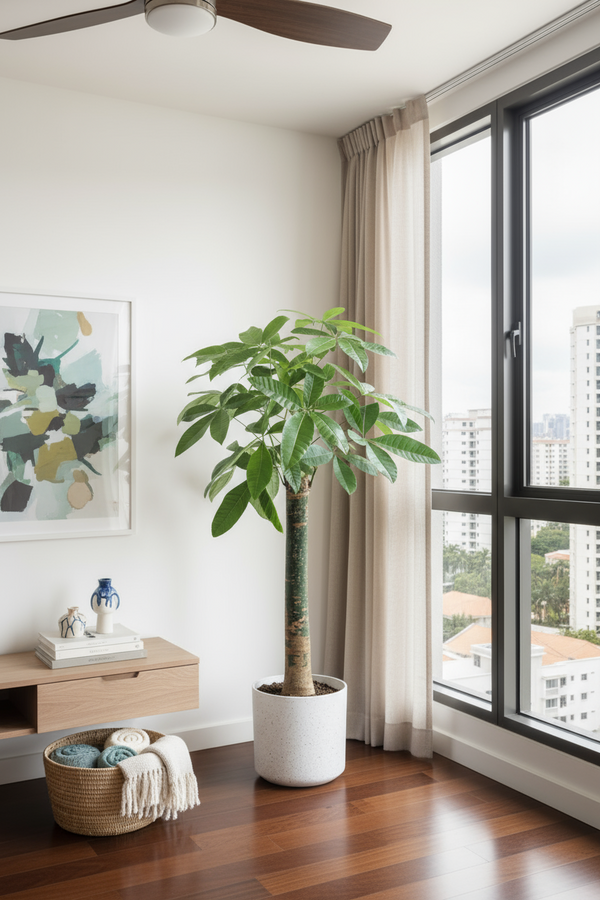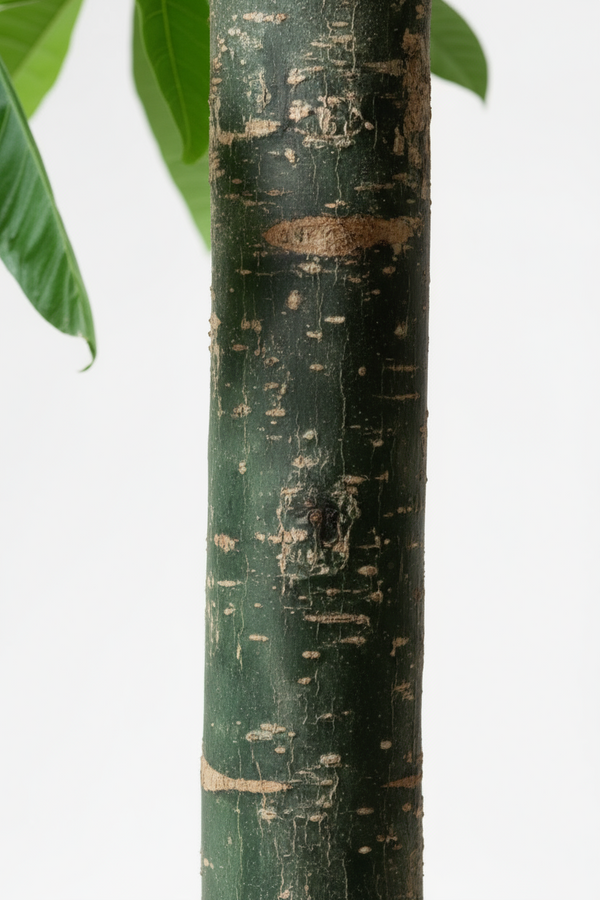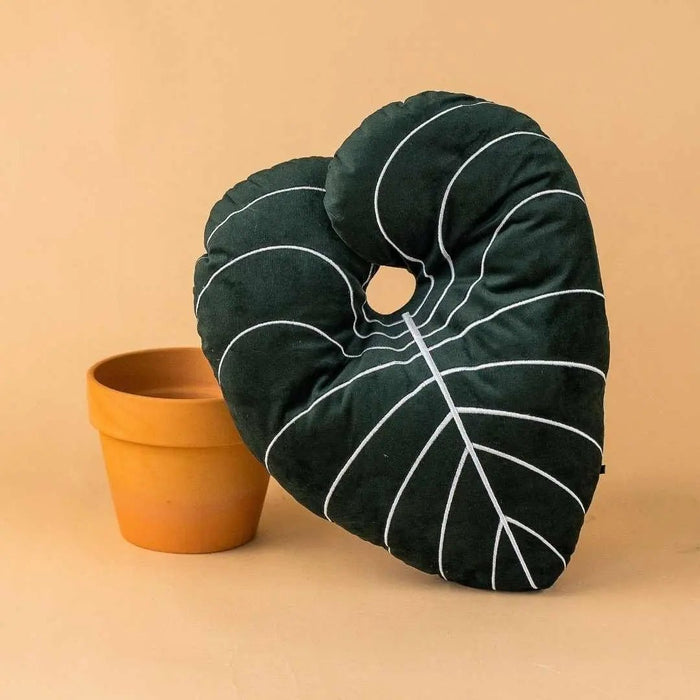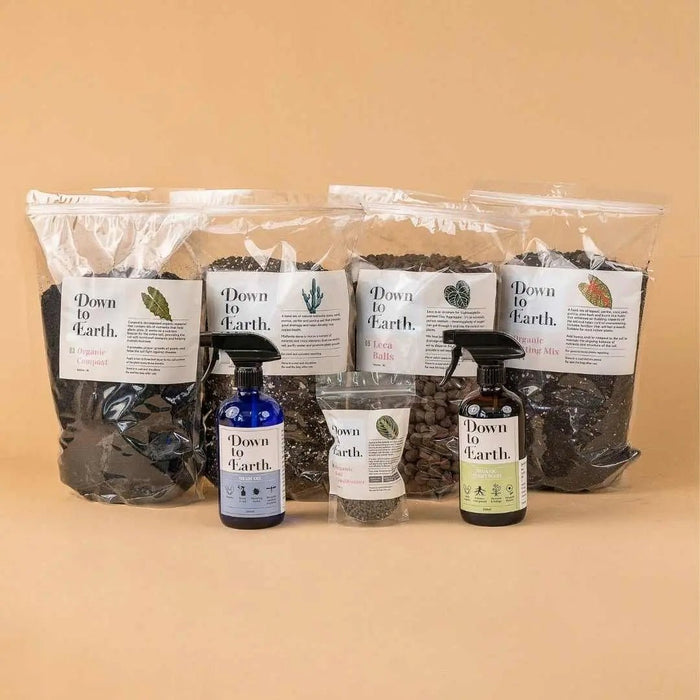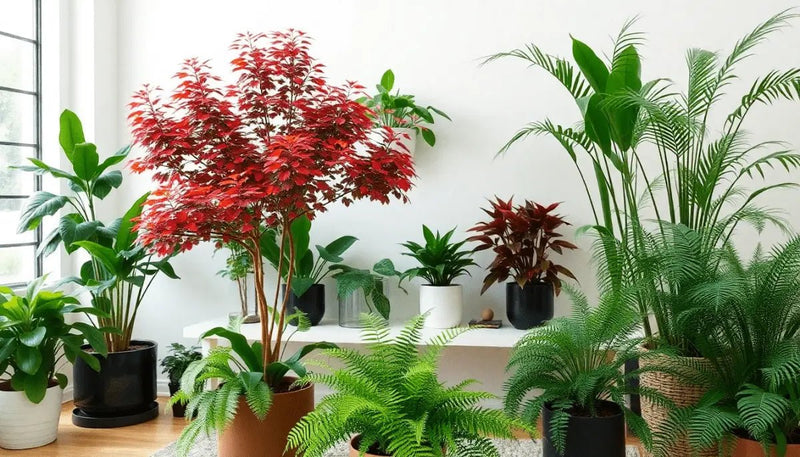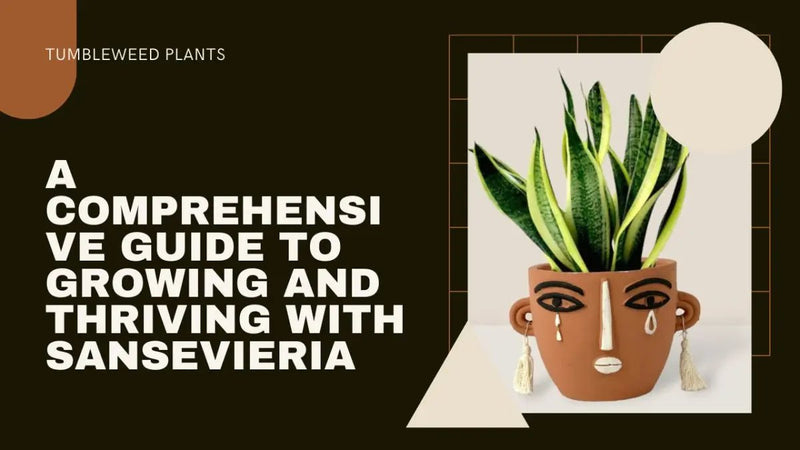How to Care for Houseplants: A Beginner's Guide
Posted on March 20 2025
Understanding the Basics of Houseplant Care
Caring for houseplants effectively begins with understanding their fundamental needs. Every plant has specific requirements for light, water, soil, and humidity, which together create the foundation for healthy growth. Recognizing these elements and tailoring care practices to a plant’s natural habitat ensures success in maintaining vibrant indoor greenery.
1. Light Requirements Light is essential for photosynthesis, the process plants use to convert light into energy. Houseplants vary widely in their light needs: some thrive in bright, direct sunlight, while others prefer low or indirect light. Observing the location of windows, the intensity of natural light, and the hours of exposure helps determine an ideal placement. Using tools such as grow lights or reflective surfaces can supplement light in spaces with insufficient natural options.
2. Watering Practices Overwatering is a common mistake in houseplant care. Each species has different watering preferences, often influenced by its native environment. Typically, tropical plants like consistent moisture, while succulents and cacti thrive in drier conditions. Allowing the top inch or two of soil to dry out before watering is a standard guideline for many plants. It’s important to ensure proper drainage to prevent root rot, which can occur if roots sit in standing water.
3. Soil and Nutrients The choice of soil significantly impacts a plant’s well-being. A well-draining soil mix is crucial for most houseplants, though some prefer specialty blends, such as orchid bark for epiphytes or gritty soil for cacti. Plants also require nutrients, which are usually provided through fertilizers. Using a balanced, water-soluble fertilizer during the growing season can replenish essential nutrients, though some plants may need specific formulations.
4. Humidity and Temperature Many houseplants derive from tropical regions, making humidity a vital factor in their health. Misting, using pebble trays, or employing a humidifier can boost moisture levels in dry environments. Similarly, maintaining temperatures within a plant’s comfort range is essential; sudden changes or extreme conditions can cause stress, contributing to issues like leaf drop or discoloration.
With consistent care tailored to their natural needs, houseplants can thrive indoors, transforming living spaces into refreshing sanctuaries.
Choosing the Right Houseplants for Beginners
Selecting houseplants that align with a beginner’s experience level is essential for cultivating confidence and maintaining healthy greenery. Beginners are encouraged to look for plants that thrive with minimal care and are forgiving of common mistakes like overwatering or insufficient light.
Factors to Consider
When deciding on houseplants, certain factors should be kept in mind:
- Light Requirements: Evaluate the natural light available in the space. Plants like snake plants and pothos thrive in low or indirect light, while succulents and cacti demand bright, direct sunlight.
- Water Needs: Some plants, such as the peace lily, require consistent moisture, while others, such as ZZ plants, can tolerate occasional neglect.
- Growth Size: Consider how much space the plant has to grow. For smaller living areas, compact species like jade plants or peperomias are ideal.
- Temperature and Humidity: Match the plant’s needs to the home environment. Tropical plants, such as philodendrons, thrive in higher humidity, while others, such as rubber plants, adapt well to standard indoor conditions.
Best Houseplants for Beginners
A well-rounded selection of beginner-friendly plants includes:
- Snake Plant (Sansevieria): Known for its resilience, this plant tolerates low light and infrequent watering.
- Pothos (Epipremnum aureum): A fast-growing vine that’s easy to care for, even in indirect light.
- Spider Plant (Chlorophytum comosum): Thrives with minimal attention and adapts well to various lighting conditions.
- Peace Lily (Spathiphyllum): Offers visual appeal with dark green leaves and thrives in moderate, indirect light.
- ZZ Plant (Zamioculcas zamiifolia): Minimal watering needs and tolerance for low light make it ideal for beginners.
Carefully assessing these factors and selecting hardy, adaptable species enables beginners to establish a manageable and rewarding indoor plant collection.
The Importance of Proper Lighting Conditions
Proper lighting is a critical aspect of maintaining healthy houseplants. Light acts as the primary energy source for photosynthesis, the process through which plants produce food and sustain growth. Understanding the specific lighting needs of various houseplants helps ensure their long-term vitality.
Houseplants can generally be categorized based on their light requirements: low light, medium light, and bright light. Low-light plants, such as pothos and peace lilies, thrive in indirect or shaded areas and can adapt to spaces with minimal natural light. Medium-light plants, including philodendrons, often prefer filtered sunlight and do well near east-facing windows. Bright-light plants, such as succulents and cacti, demand direct sunlight and flourish when placed near south or west-facing windows.
To optimize lighting conditions, factors such as the direction and intensity of light should be considered. Natural light can vary throughout the day and year depending on the orientation of windows and seasonal changes. If adequate light is unavailable, artificial light sources like LED grow lights can supplement natural light. Grow lights emit specific wavelengths necessary for photosynthesis and are particularly useful in homes with limited sunlight exposure.
Signs of improper lighting include slow growth, droopy leaves, and yellowing foliage. Plants receiving excessive sunlight may develop scorched or browned leaves, while those lacking sufficient light may exhibit leggy stems. Regular observation is essential to adjust positioning and ensure the plant receives optimal light. Rotating plants periodically allows for even exposure, helping them grow symmetrically.
Proper lighting not only supports plant health but also enhances their aesthetic appeal. A well-lit environment enables houseplants to thrive, bringing vibrant energy and natural beauty to living spaces. By identifying the appropriate lighting needs for each plant and monitoring them consistently, gardeners elevate their ability to nurture healthy indoor greenery.
Watering Guidelines: How Much Is Too Much?
Overwatering is one of the most common mistakes beginners make when caring for houseplants. While a well-watered plant appears vibrant and healthy, excessive moisture can drown roots, leading to rot and even plant death. Understanding the balance of hydration is critical for maintaining thriving houseplants.
The water requirements of houseplants vary depending on species, pot size, soil type, humidity, and light levels. Plants such as succulents and cacti prefer infrequent, deep watering to mimic their arid native environments. Conversely, tropical plants like ferns require higher humidity and slightly moist soil.
To determine if a plant needs water, testing the soil is key. Insert a finger about one to two inches into the soil. If it feels dry, the plant likely needs water. Alternatively, lifting the pot can provide a clue; if it feels light, it may need hydration. Using tools like moisture meters can also offer accurate readings, especially for beginners.
Water application should focus on consistency. Pour water until it flows out of the pot’s drainage holes, ensuring the entire root ball is reached. Allow any excess water to drain completely and avoid letting the pot sit in it, as standing water increases the risk of root rot.
Signs of overwatering to watch for include yellowing leaves, wilting despite wet soil, and a musty smell from the roots. When these symptoms arise, reducing water frequency and ensuring proper drainage can often revive the plant.
Seasonal adjustments are also necessary. During winter, plants generally require less water due to slower growth, while active summer months may necessitate more attentive watering practices.
The Role of Humidity in Keeping Houseplants Healthy
Humidity plays a significant role in the health and growth of houseplants, as it directly impacts their ability to perform essential functions like photosynthesis and transpiration. Many popular houseplants originate from tropical and subtropical regions, where they thrive in high-humidity environments. Without adequate moisture in the air, these plants may struggle to maintain hydration, leading to visible signs of stress such as browning leaf edges, wilting, or stunted growth.
The ideal humidity level for most houseplants ranges between 40% and 60%. However, some moisture-loving varieties, such as ferns, calatheas, and orchids, may require even higher levels to thrive. Monitoring indoor humidity levels can help create a suitable environment for these species and prevent common issues associated with dryness, like pest infestations and leaf damage.
Indoor heating and cooling systems often lower humidity levels, especially during colder months. To combat this, several methods can be employed to increase humidity. Using a humidifier is one of the most effective solutions, as it provides consistent moisture throughout the day. Alternatively, grouping plants together can create a microclimate that retains humidity. Placing water trays filled with pebbles beneath pots is another practical approach to enhance moisture levels through evaporation.
Additionally, regularly misting plants with water can offer temporary relief, although it is insufficient as a long-term measure. Care should also be taken when misting plants prone to fungal diseases, as excess moisture on leaves may promote unwanted growth. Understanding the specific needs of each species is essential for establishing the right balance of humidity in their surroundings.
Selecting the Right Soil and Pot for Your Plants
Choosing the appropriate soil and pot is crucial for the health and growth of houseplants. Each plant species has unique needs, and understanding these requirements ensures optimal conditions for root development and hydration management.
Understanding Soil Types
Different houseplants thrive in specific soil blends based on their natural habitat:
- Succulent and Cactus Mix: These plants require a gritty, well-draining soil that prevents water retention. Look for mixes containing materials like sand, perlite, or pumice.
- Potting Mix for Tropical Plants: Plants like philodendrons and calatheas prefer moisture-retentive soil with good aeration. A blend of peat moss, vermiculite, and perlite is ideal.
- Specialized Soil for Orchids and Epiphytes: These don’t grow well in traditional soil. Use a coarse bark-based mix that mimics their natural growing conditions on trees.
When selecting soil, ensure it is free of pests or pathogens by purchasing from trusted brands. Avoid using garden soil, as it can compact inside pots and hinder drainage.
Choosing the Proper Pot
The right pot impacts root health and watering efficiency. Consider the following:
- Material:
- Terracotta: Porous and breathable, ideal for plants that prefer dryness, but they may dry out too quickly in hot climates.
- Plastic or Ceramic: Retains moisture well, suitable for tropical or moisture-loving plants.
- Drainage: Always use pots with drainage holes to prevent overwatering and root rot. Place a saucer beneath to catch water if necessary.
- Size: Ensure the pot is slightly larger than the root ball. Oversized pots retain excess water, while small pots can restrict growth.
Repotting Tips
Repot when roots outgrow the current pot or become visible through drainage holes. Choose a pot 1–2 inches larger in diameter than the previous one and refresh the soil to provide new nutrients.
Ensuring the right combination of soil and pot sets the foundation for vibrant and healthy houseplants.
Fertilizing Schedule: Feeding Your Houseplants Correctly
Providing houseplants with the right nutrients is essential for their growth, vibrancy, and overall health. Fertilizing ensures they receive the macronutrients and micronutrients often missing from standard potting soil. However, over-fertilization can harm plants, so timing and dosage are crucial.
Understanding Fertilizer Needs
Each houseplant has unique nutrient requirements depending on its type, growth rate, and light conditions. Fast-growing plants, such as pothos or spider plants, typically require more frequent fertilization. In contrast, slower growers, like succulents or orchids, need less attention. Understanding a plant’s growth cycle is also essential, as most require more feeding during their active growing season (spring and summer) than during dormancy (fall and winter).
Types of Fertilizers and Their Use
Houseplant fertilizers come in various forms, including liquid, granular, and slow-release options. Liquid fertilizers are diluted with water and applied during regular watering, offering ease of control. Granular fertilizers are mixed into the soil and dissolve over time. Slow-release pellets provide consistent nutrients for extended periods but may not be suitable for plants with specific seasonal needs.
Establishing a Schedule
Spring/Summer (Active Growth) Fertilize most houseplants every two to four weeks using a balanced, water-soluble fertilizer diluted to half the recommended strength.
Fall/Winter (Dormant Phase) Reduce the frequency of fertilizing to once every six to eight weeks or suspend entirely, depending on the species and environmental factors.
Tips for Success
- Avoid fertilizing immediately after repotting, as fresh potting soil often contains nutrients.
- Water the plant before applying fertilizer to ensure even distribution and prevent root damage.
- Observe plants for signs of over-fertilization, such as leaf browning or salt buildup on soil.
A disciplined fertilizing routine tailored for individual houseplants promotes healthy growth while preventing nutrient-related issues. Proper feeding enhances their resilience, beauty, and overall vitality.
Common Pest Control Tips for Indoor Plants
Indoor plants are susceptible to a variety of pests, but early detection and proper care can prevent infestations. Common pests such as spider mites, aphids, mealybugs, and fungus gnats are frequently encountered by houseplant owners. Effective pest control involves both regular monitoring and appropriate intervention methods.
Identifying Pests
Closely inspect leaves, stems, and soil for signs of pests. Search for visible insects, sticky residue, webbing, or discolored and distorted foliage. Yellowing leaves or stunted growth can also indicate a pest problem. Using a magnifying glass can help identify smaller pests like mites or aphids.
Preventive Measures
- Quarantine New Plants: Isolate newly purchased plants for 2-3 weeks before mixing them with existing ones to avoid introducing pests.
- Maintain Cleanliness: Wipe leaves regularly to remove dust, which can shelter pests, and clean pots and trays.
- Optimize Growing Conditions: Ensure plants are not overwatered or kept in overly humid spaces, as these conditions attract fungi and pests.
Manual Removal Techniques
If pests are spotted, start with manual removal. Use a soft cloth dipped in soapy water to wipe leaves, or gently spray plants with water to dislodge insects. For mealybugs, cotton swabs dipped in rubbing alcohol are effective.
Natural and Chemical Solutions
- Natural Remedies: Homemade solutions like neem oil sprays or a mild dish soap and water mixture can eradicate most infestations.
- Chemical Insecticides: For severe cases, plant-safe insecticides can be applied. Always follow manufacturer instructions to avoid harming the plant.
Regular Monitoring
Conduct monthly pest checks as part of the care routine. Early intervention avoids extensive damage and keeps houseplants healthy.
Signs of Stress and How to Revive Unhealthy Plants
Houseplants often exhibit clear signs of stress when their care requirements are not met. Identifying these signs early is critical to ensuring their recovery and long-term health. Stress in plants can manifest through various symptoms visible in their leaves, stems, or overall appearance.
Common Signs of Plant Stress:
- Yellowing Leaves: This is often caused by overwatering, underwatering, or poor drainage. It can indicate root rot or improper nutrient levels.
- Browning Leaf Tips: Dry, brown tips are typically a result of low humidity, excessive fertilizer, or inadequate watering.
- Wilting or Drooping: Plants may droop due to extreme dehydration or overwatering that suffocates the roots.
- Leaf Drop: A sudden loss of leaves may occur from temperature fluctuations, pest infestations, or overwatering.
- Stunted Growth: Poor or no growth can result from insufficient light, depleted soil nutrients, or an inappropriate container size.
- Spotted or Deformed Leaves: These are often a sign of pest infestations, fungal infections, or nutrient deficiencies.
Steps to Revive Unhealthy Plants:
- Assess the Cause: Inspect the plant’s environment, watering schedule, and root health. Check for pests or disease on leaves and stems.
- Adjust Watering Practices: Modify how often or how much water the plant receives. Ensure pots have a proper drainage system.
- Improve Lighting Conditions: Move the plant to a brighter spot if light levels are low, or provide shade if it’s receiving too much direct sunlight.
- Raise Humidity Levels: Use a pebble tray with water, group plants together, or introduce a humidifier to boost humidity.
- Prune Damaged Areas: Remove yellowed, browned, or diseased leaves to redirect the plant’s energy.
- Replenish Soil Nutrients: Repot the plant using fresh soil or add fertilizer suitable for its specific needs.
- Treat for Pests or Disease: Use insecticidal soap, neem oil, or other treatments to eliminate pests or pathogens.
An ongoing observation of a plant’s health ensures early detection of issues and timely interventions.
Seasonal Care Tips for Year-Round Plant Health
Caring for houseplants requires attention to seasonal shifts, as plants’ needs change throughout the year. Adjusting light exposure, watering habits, and feeding schedules ensures healthy growth and resilience.
Spring: Encourage New Growth
- Increase light exposure: Move plants closer to windows or clean dusty panes to let in more sunlight.
- Introduce fertilization: Begin feeding plants with a balanced fertilizer to support new growth.
- Repot if needed: Spring is an ideal time to repot plants showing signs of being root-bound.
- Inspect for pests: Check for infestations as rising temperatures can encourage insects.
Summer: Manage Heat and Humidity
- Provide indirect light: Shield plants from harsh afternoon sun to prevent leaf damage and dehydration.
- Increase watering: Monitor soil moisture carefully; many plants dry out faster in the summer heat.
- Maintain humidity: Misting or placing plants on a tray with water and pebbles can counteract dry indoor air.
- Prune to shape: Trim leggy growth or faded blooms to direct energy toward healthy foliage.
Fall: Prepare for Dormancy
- Reduce fertilization: Gradually decrease feedings as plants transition into slower growth.
- Ease watering: Allow soil to dry slightly more between waterings as temperatures drop.
- Clean and dust leaves: Prepare plants for reduced light by maximizing photosynthesis efficiency.
- Move away from drafts: Relocate plants away from cold windows or doors to avoid temperature shocks.
Winter: Ensure Survival in Harsh Conditions
- Maximize light: Use grow lights if natural sunlight is limited during short winter days.
- Cut back on watering: Overwatering is a common problem during winter dormancy; ensure the soil dries adequately.
- Maintain stable temperatures: Keep plants away from heat sources like radiators, which can cause uneven drying.
- Monitor pests: Cold weather can drive pests indoors, so continue regular inspections.
Tailoring care routines to seasonal changes helps houseplants stay vibrant year-round, fostering long-term health and growth.
The Role of Pruning and Repotting in Plant Maintenance
Pruning and repotting are essential practices for maintaining the health and aesthetics of houseplants. These tasks support proper growth, enhance nutrient absorption, and ensure a plant’s overall vitality.
Pruning for Health and Shape
Pruning involves the removal of dead, damaged, or overgrown plant parts. This process prevents the spread of diseases by eliminating compromised leaves or stems and redirects the plant’s energy toward healthy growth. Regular pruning encourages compact, bushier growth and often stimulates flowering in certain species. Tools such as clean, sharp scissors or pruning shears should always be used to make precise cuts and avoid damaging plant tissues.
Pruning also serves aesthetic purposes by maintaining a plant’s desired shape. Removing leggy growth that occurs in low-light conditions allows the plant to regain a full, balanced appearance. Timing plays a critical role; for example, many flowering plants benefit from pruning after they bloom to encourage future blossoms. Always research the specific pruning needs for each plant species to avoid accidental harm.
When and Why to Repot
Repotting is necessary when a plant outgrows its container, rendering the pot’s dimensions or soil nutrients inadequate. Signs that a plant needs repotting include roots visibly outgrowing drainage holes, stunted growth, or frequent drying out of soil despite regular watering. Repotting rescues plants from root-bound conditions that restrict nutrient and water uptake, allowing roots to expand freely.
During repotting, one should gently untangle root systems and remove any decayed or bound roots. Selecting a pot slightly larger than the previous one prevents overwatering issues while providing room for growth. Along with fresh soil, enriched with organic matter or slow-release fertilizer, repotting rejuvenates the plant’s nutrient supply, promoting robust health.
Together, pruning and repotting help maintain a balanced growth cycle, ensuring houseplants thrive sustainably.
Tips for Integrating Houseplants into Your Living Space
Introducing houseplants into living spaces can enhance the ambiance, improve air quality, and foster a connection with nature. Below are tips to seamlessly integrate houseplants into the home, catering to both functionality and aesthetics.
1. Assess Lighting Conditions
Start by examining the natural lighting in different areas of the home. Understand the difference between bright, indirect, and low light. Place sun-loving plants like succulents near south-facing windows, while ferns and pothos thrive in shaded corners.
2. Choose Plants Based on Space
Consider the available space before selecting plants. For compact areas, opt for smaller varieties like snake plants or peperomias. In larger rooms, taller options like fiddle-leaf figs or rubber trees can make a striking statement.
3. Utilize Vertical Space
Hanging planters, wall-mounted pots, or shelves are excellent options for adding greenery without consuming floor space. Macramé hangers can be used for trailing plants, creating a cascading effect.
4. Group Plants Strategically
Cluster plants with similar care requirements together. This simplifies maintenance and enables the creation of visually appealing arrangements. Grouping plants of varying heights introduces depth and dimension to decor.
5. Incorporate Decorative Pots
Select containers that complement the home’s interior design. Use neutral-toned pots for a minimalist look or patterned and colorful pots to add vibrancy. Ensure that containers have proper drainage to support plant health.
6. Blend Plants with Furniture
Focus on integrating plants into existing furniture layouts. Place small potted plants on coffee tables, bookshelves, or windowsills. Use larger plants to fill empty corners or flank entryways for symmetry and warmth.
7. Keep Accessibility in Mind
Position plants where they can be easily watered, cleaned, or repotted. Avoid placing them where they might obstruct movement or become hazardous in narrow spaces. Accessibility ensures both convenience and safety.
8. Rotate and Rearrange Periodically
To ensure even growth, rotate plants to expose all sides to light. Rearranging plants occasionally refreshes the environment, offering a renewed sense of style while promoting plant health.
Houseplants, when thoughtfully placed, can transform living spaces into serene havens of natural charm.
Resources and Tools to Enhance Your Houseplant Journey
Achieving success with houseplants is easier with the right resources and tools. By utilizing appropriate supplies and expert knowledge, beginners can confidently foster thriving indoor greenery. Here are key resources and tools to support houseplant care.
Essential Tools for Houseplant Maintenance
Watering Tools A watering can with a narrow spout is recommended to direct water to the soil without splashing leaves. For delicate plants, a spray bottle ensures controlled misting to maintain humidity levels.
Pruning Shears High-quality pruning scissors or shears enable the removal of dead leaves, stems, or branches. Clean, sharp blades prevent plant damage and reduce the risk of infections.
Potting Materials Ensure access to pots with proper drainage holes. Terra-cotta pots, for instance, offer breathability and prevent overwatering issues. Additionally, invest in a trowel and gloves for repotting tasks.
Grow Lights For low-light environments, full-spectrum grow lights replicate sunlight and support healthy photosynthesis. Choose adjustable lights to cater to different plant heights and light requirements.
Online Resources for Guidance
Houseplant Identification Apps Apps such as PictureThis or PlantSnap help identify plant species and provide customized care instructions. These tools are particularly useful for beginners exploring varieties.
Educational Blogs and Websites Reputable platforms like The Spruce or Gardenista offer expert advice, troubleshooting tips, and how-to guides tailored to houseplant enthusiasts.
Online Communities Joining forums or social media groups, such as houseplant subreddits or Facebook groups, connects enthusiasts for questions, suggestions, and collaborative learning.
Long-Term Planning Support
Calendars or plant-care trackers are valuable for scheduling waterings, feedings, and repotting. Digital tools like smart trackers notify users of plant needs, ensuring timely interventions.
Troubleshooting Common Houseplant Problems
Houseplant issues are often a result of improper care, pests, or adverse environmental conditions. Identifying the symptoms is crucial to addressing the underlying problem. Below are some common houseplant problems and how to resolve them.
Yellowing Leaves
Yellow leaves are often caused by overwatering, underwatering, or a lack of essential nutrients. Check the soil’s moisture level; if the soil feels soggy, reduce watering and ensure the pot has proper drainage. If underwatering is the cause, increase watering gradually. Yellowing can also indicate insufficient light; move the plant to a brighter location if necessary.
Drooping or Wilting
Wilting leaves could signify dehydration or root rot caused by overwatering. Feel the soil—dry soil means the plant needs water, while soggy soil suggests a need to let it dry out. Ensure the plant is not pot-bound, as constrained roots may restrict water absorption. Repotting in fresh soil may be necessary.
Brown Tips or Edges
Brown tips often point to low humidity, fluoride in tap water, or inconsistent watering. Group plants together to increase humidity, or use a humidifier. Switching to distilled or rainwater can eliminate chemical buildup. Additionally, avoid letting the soil dry out completely between waterings.
Leaf Drop
Sudden leaf drop can occur from changes in temperature, light, or humidity. Drafts or relocation can shock plants. Avoid abrupt environmental changes, and ensure temperature and lighting conditions align with the plant’s needs.
Pest Infestations
Common pests include spider mites, mealybugs, and scale. Inspect leaves, stems, and soil regularly for visible pests or webbing. Wipe leaves with neem oil or insecticidal soap, and isolate affected plants to prevent spreading.
Stunted Growth
Poor growth often stems from insufficient light, pot-bound roots, or lack of nutrients. Feed plants with an appropriate fertilizer during their growing season and repot them if necessary. Providing the proper level of sunlight can also encourage healthy growth.
Regular monitoring and timely intervention are essential to keep houseplants thriving.

